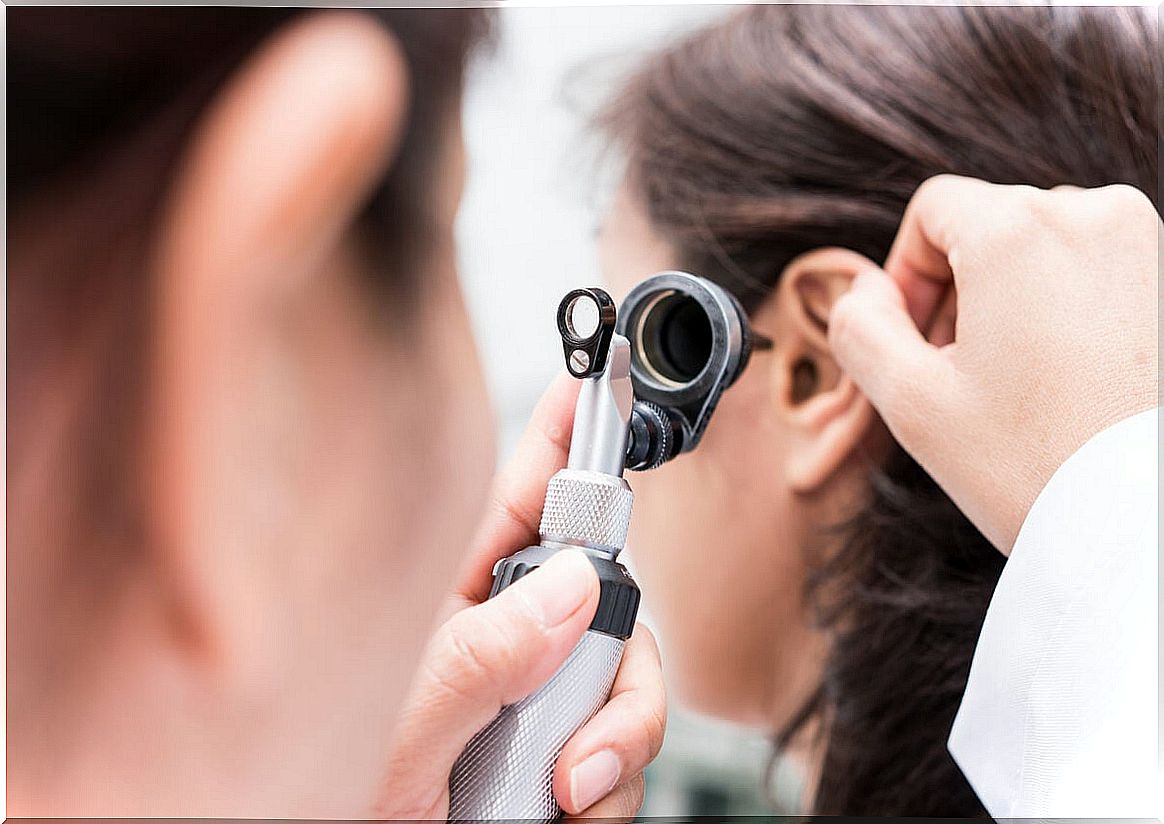Postural Vertigo: How To Prevent And Treat It?
Positional vertigo is an anomaly that tends to disappear and reappear spontaneously. At other times it requires a simple treatment that can be carried out in the doctor’s office.

Positional vertigo , also known as benign paroxysmal positional vertigo , is a common condition in people who are between 40 and 50 years old. In up to more than 50% of cases the cause that produces it is unknown and in many cases it disappears spontaneously.
One in three people suffers from an episode of simple positional vertigo in their lifetime. It is almost always something temporary and without major consequences. The condition was described for the first time by Barany, in 1921, and so far there is no specific treatment for its approach.
It is estimated that 2.5% of the population will experience a severe crisis of positional vertigo throughout their lives. The incidence increases with age and up to 9% of people over 60 years of age suffer from this type of problem, constituting a not inconsiderable reason for consultation.
What is positional vertigo?
Postural vertigo is defined as an illusion of movement, either from the environment, or from the person himself. The sensation is like spinning rocking, body shifting, or ground movement. It usually lasts for a short time, but it is recurring.
We speak of postural vertigo, specifically, when the illusion of movement appears when changing the posture of the head. This type of dizziness causes a sensation that ranges from mild to intense. Although it is an annoying problem, it is rarely serious.
There are two classifications of general vertigo: peripheral and central. The postural is of the peripheral type, which is the most common and is not dangerous. Central vertigo is more serious and has to do with a disease in the brain; episodes last longer and are usually more intense.

Identify the problem
The basic symptom of postural vertigo is the illusory sensation of movement, which causes a certain loss of balance that most people define as dizziness or lightheadedness. Sometimes it is accompanied by nausea or vomiting, as well as the idea of having the ears plugged, with rapid movements of the eyes and lightheadedness.
Most commonly, these episodes come on suddenly and last less than a minute. The usual thing is that they are triggered by moving the head and that the intensity is variable. Vertigo recurs, but it may go away for a while and come back again later.
Usually, the doctor can diagnose it through a clinical interview accompanied by a physical evaluation. If in doubt, tests such as electronystagmography or videonystagmography, and even an MRI scan, may be ordered.
How to prevent it?
In more than half of the cases of this type of vertigo it is impossible to determine the cause that produces it. In general, there are no relevant risk factors, but it is more common in those who have a family history of the problem, have suffered from ear infections or had a blow to the head, even if it was not serious.
A good part of the cases is due to a problem in the inner ear. There are tubes filled with liquid that shake when the person makes a movement. If there are small pieces of calcium floating in the fluid, which are called canaliculi , the brain may perceive displacement, even if the person is still.
Since this type of dizziness is directly associated with head movements, the best way to prevent it is to avoid rapid or sudden movements of the head . It is also advisable to avoid stress and consumption of substances that excite the nervous system.

How to treat positional vertigo?
There are some medications that help decrease the feeling of vertigo, but a procedure called the Epley maneuver is considered very effective in eliminating symptoms. The objective of this is to remove the canaliculi from the ear canals so that the sensation of movement no longer occurs.
This maneuver is performed in the doctor’s office and consists of turning the head on the side where the vertigo occurs. Then the patient is laid on his back, suddenly; at that point the symptoms are likely to increase. Then the head is slowly turned in the opposite direction and the body in the same direction.
At the end, the person is asked to sit down and the exercise is repeated. The repetitive application of this procedure leads to the disappearance of vertigo. It can return a few weeks later, which will require a new application of the technique.
It will be a professional who defines the need and frequency of the application, but we cannot stay alone with that. If you suffer from recurrent dizziness, a complete evaluation is the one that will be applied to rule out other more serious causes.








